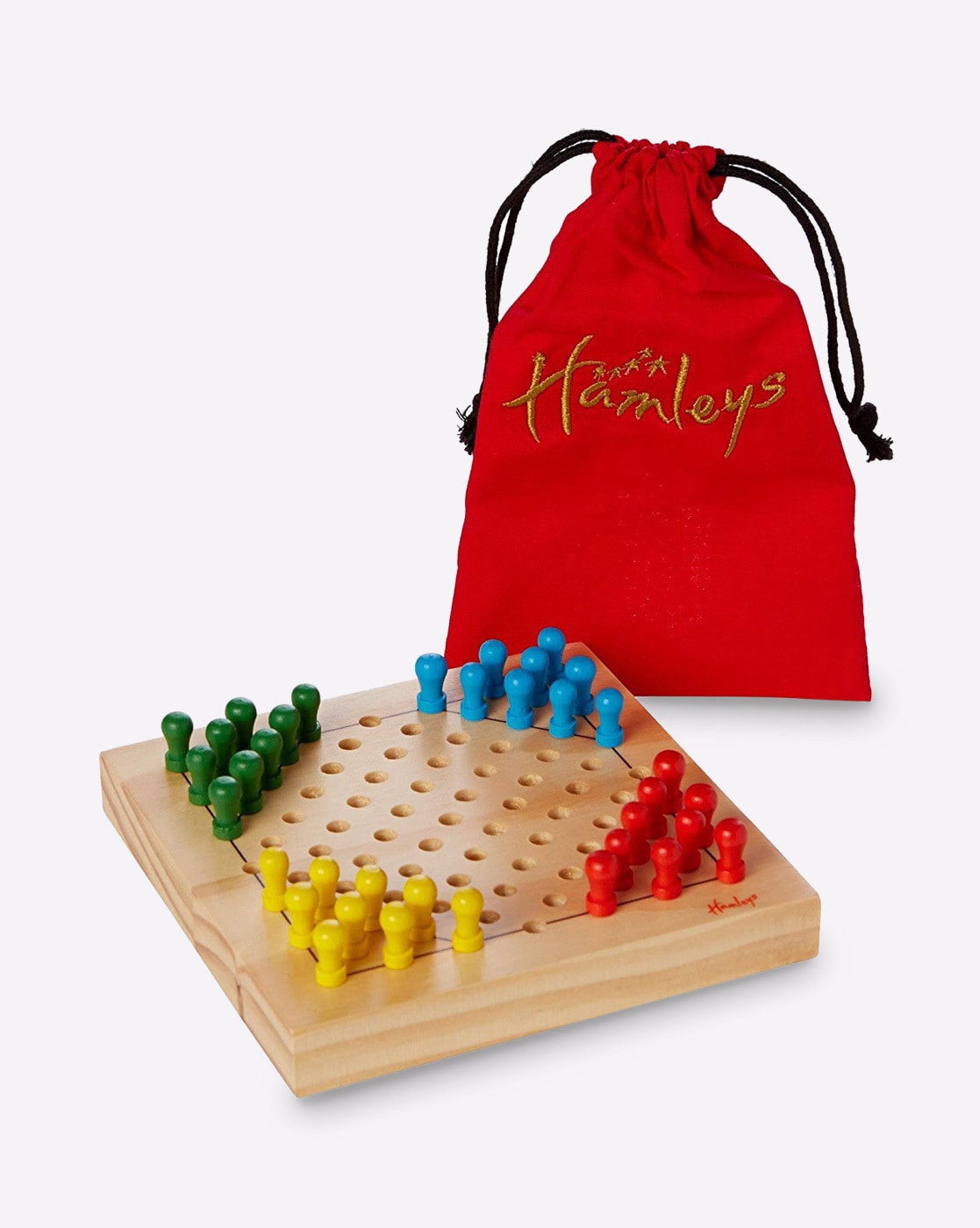
Chinese Checkers is one of the oldest puzzle games that were originally based on a game named Halma.
Both Halma and Chinese Checkers are quite identical except a few differences here and there. Chinese Checkers is placed on a star shaped board which allows up to six players to participate in the game, where the minimum number of the players is two.
The game allows each player to have ten pieces and compared to Halma, the distance between your opponent's areas is very less.
Some of the modern versions of this game that are designed for children features only six pieces but there are other versions where players use fifteen pieces too.
The game's object is to place a piece on the direct opposite corner. This is done by jumping over other pieces, capturing and blocking.
Even though Chinese Checkers have the name 'China' associated with it, historians believe that the game did not originate in China or it has any sort of relation with the Chinese Chess or regular Checkers.
Historians believe that the game was developed somewhere in the West and the name 'Chinese Checkers' was given by some brilliant merchants in United States to bring an exotic feel to this game.
Such an argument is backed by the game's German name, Stern-Halma because the game not only has resemblances to the old Halma but it is more likely that the Germans named it after the original game.
The star board used in the game is six pointed and there are six sets of game pieces to be used. Each set will be colored differently and are mostly made on marbles.
The pieces are organized in a triangular shape on each point of the star. It requires good level of tactics and quick decision making skills to excel in this game.

Chinese Checkers Online Multiplayer

Helpful chinese checkers strategies & tips Find the longest hopping path: Get as many of your marbles out of the blue triangle as possible and start moving them up the board. Then look for the longest ladder or chain out there and use it to move your trailing marbles across the board as quickly as possible.
The history of Chinese Checkers can't be told without talking about the history of Halma, which was invented by famous American Professor, Dr. George Howard Monks.
It is assumed that the game was invented between 1883 and 1884. It all started when George's sibling wrote to him from England, mentioning about an interesting game in the name of Hoppity that was played by the British.
Eventually George got fascinated by the game and this laid foundation stone to the invention of a new game based on Hoppity.
There are not many evidences to prove how far Dr. George got influenced from Hoppity because there are not many studies on Hoppity so the knowledge about this game is scarce.
Famous mathematician Dr. Thomas Hill helped Geroge in the development of the game and the name Halma was contributed by him. The word Halma in Greek means 'jump'.
E.I Horsman Company is the publisher of the commercial version of Halma and it was in 1885 that the first version of the game was released.
Two interesting features of the game Halma are that the number of players determines the number of pieces to be used in the game and jumped pieces will not be removed from board!
This is the acient game of Chinese Checkers. In this game you and the computer compete to move the pegs to the enemy base as quickly as possible. A peg can make consecutive jumps to speed up its movement, so you need to strategically place your pegs so that your other pegs can make long consecutive jumps. Chinese Checkers Are you a fan of Chinese Checkers? Then you've come to the right place! Play our awesome rendition of the old classic. So what if it wasn't actually made in China? It's fun all the same! Enjoy this enhanced version, with great sound and graphics, and we guarantee you'll come back for more - one game is never enough. Chinese Checkers; Chinese Checkers. This is a variation of the classic game Chinese Checkers. Checkers YOU MIGHT ALSO LIKE. 2 Player Checkers. 3 in One Checkers. Checkers Classic. Master Checkers. Spot 5 Differences. Chinese checkers (variant of Halma) is a classic board game that can be played by two to six people! The aim is to race all of one's pieces into the star corner on the opposite side of the board before the opponents do the same.
Chinese Checkers was in invented in 1892 and this was in Germany. The game was first patented by Ravenburger, a German Company but they took the patent in the name Stern Halma.
The game came to United States with the name 'Hop Ching Checkers' and a year later, in 1928 it was renamed as Chinese Checkers.
Interestingly, there was no patent or copyright for this game in United States, which still remain as a mystery. However, Milton Bradley Company managed to get a patent for the game in 1941 but no one knows on what grounds such a patent was granted.
If you like Chinese Checkers, maybe you'll want to try Minesweeper, another game that stands the test of time.